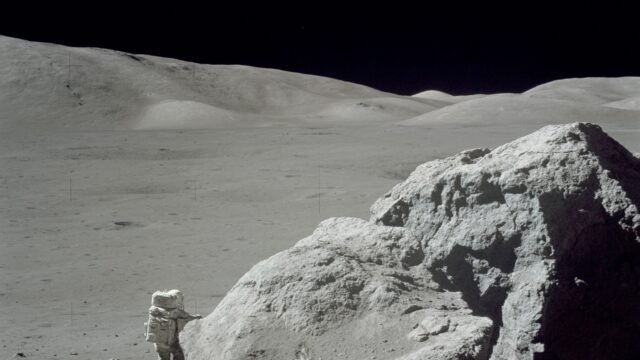The Swiss-based company, Astrostrom has partnered with the European Space Agency to study the possibility of building a solar power satellite using lunar resources.
The project, which is part of ESA’s Open Space Innovation Platform, has designed the Greater Earth Lunar Power Station (GE-LPS), a lunar orbit habitable space station for solar energy.
The station uses lunar-manufactured solar cells to transmit megawatts of microwave power to the lunar surface.
The project aims to establish sustainable energy generation while minimizing reliance on Earth-based manufacturing and transportation.
The Greater Earth Lunar Power Station (GE⊕-LPS) Explained
Energy from space and space tourism could become synergistic economic drivers for future space development.
The main obstacle to implementing the Space Energy Option is launching a solar power satellite (SPS) from the surface of Earth.
In response, John Mankins developed the SPS-ALPHA Mark-II concept, which proposes that the photovoltaic (PV) power generation system would consist of many mass-produced modular PV elements that would “self-assemble” into the SPS structure.
On the other hand, David Criswell introduced a significant variation of the SPS concept called the Lunar Power System (LPS).
His system proposed using lunar materials to construct the SPS elements in situ.
The GE⊕-LPS is an SBSP concept that incorporates both of these technological approaches with a possible lunar tourist destination.
The elements of the GE⊕-LPS would be constructed primarily from lunar resources using a lunar-based automatized manufacturing process connected to a mass driver system for transport into a lunar orbit, with Earth-Moon L1 being the most suitable assembly point.
The flight of a butterfly serves as the source of design inspiration for the GE⊕-LPS.
It has over one square kilometer of V-shaped solar panels with built-in antennas organized in a helix pattern.
This design enables an uninterrupted generation of 23 megawatts of electricity to meet the energy required by prospective lunar missions and crewed bases.[1]
The concept uses a toroidal design that allows for the central placement of a habitat and control center that uses water and lunarcrete for radiation shielding and artificial gravity.
The GE⊕-LPS incorporates an ion electric propulsion system to enable artificial gravity for crew and guests as well as to provide maneuverability and attitude control.
As the lunar manufacturing operations could be scaled to any dimension, SPSs assembled in lunar orbit could provide much-needed clean solar energy for terrestrial purposes.
What Does the Success of the Greater Earth Lunar Power Station Mean?
The Astrostrom study potentially presents a comprehensive blueprint for the large-scale production of environmentally-friendly solar power satellites.
GE⊕-LPS anticipates manufacturing techniques and assembly approaches for big satellite launches, overcoming Earth’s challenges.
Sources suggest efficient lunar resource production could lead to solar power satellites and meet Earth’s growing clean energy needs.
The power plant has opportunities as a prospective habitat as it is situated at an Earth-Moon Lagrange point around 38,121 miles (61,350 km) from the lunar surface.
The GE-LPS, which acts as a link between Earth and the Moon operations, aims to provide adaptable artificial gravity while acting as a test site for future space populations.
Solar-powered satellites built on the moon would require much less velocity change to reach geostationary Earth orbit than those launched from Earth.
This benefit might have the power to completely transform the space sector by enabling the creation of lunar mining, processing, manufacturing facilities, and a cislunar transit system.
These developments have the potential to contribute to the development of a two-planet economy and the emergence of a spacefaring society.
The GE⊕-LPS concept doesn’t require technological breakthroughs, as core lunar surface operations technologies are already in use or advanced stages.
Astrostrom and ESA aim to provide modular and remote lunar operations by adapting and extrapolating these technologies to the lunar environment.
The study suggests lunar-made solar power satellites are cost-effective and competitive, highlighting the economic feasibility of space-based solar power as a solution to Earth’s growing energy demands.
This study investigates the technical and financial feasibility of the GE⊕-LPS concept, aiming for sustainable energy generation from space.
ESA’s SOLARIS research and development initiative confirms its practicality, potentially leading to larger-scale deployment of lunar-made solar power satellites.
References
- Andreas Vogler, et al, ‘Astrostrom: The Greater Earth Lunar Power Station (GE⊕-LPS)’, ASTROSTROM, https://astrostrom.ch/en/GEO-LPS_greater_earth_lunar_power_station.php[↩]





